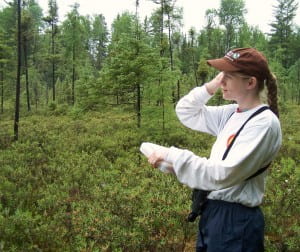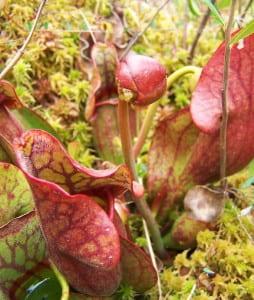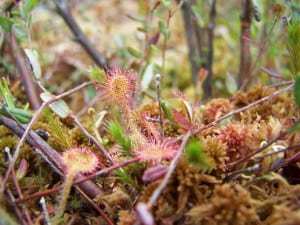Every year since 1987, a large group of ornithologists have performed breeding bird surveys within the Nicolet National Forest (NNF; see the Nicolet National Forest Bird Survey: (http://www.uwgb.edu/birds/nnf/) in northeastern Wisconsin, now contributing to well over 40,000 records of birds consisting of over 200 total bird species. Whether you are an ornithologist by profession, a volunteer, a student, a back-yard birder, the state’s best expert, or a complete novice who has never seen a Canada Goose in your life, absolutely anyone can come and assist in the survey! Luckily, I was able to be one of the group leaders and engage myself in the survey for the very first time. Having heard about how much fun and exciting it is to participate in such a wonderful annual event, I was not disappointed in the slightest!
On the first day of the survey, I led a small team birders consisting of a young couple and another woman to pine and hardwood forests and a few beautiful bogs. Although the sites were not as biodiversity rich as other sites within the Nicolet National Forest, we were able to observe many interesting but “usual suspect” birds, such as the Ovenbird, Red-eyed Vireo, Chipping Sparrow, Eastern Wood-Pewee, Rose-breasted Grosbeak, American Robin, Brown Creeper, Blue Jay, Black-capped Chickadee, Black-throated Green Warbler, Alder Flycatcher, Yellow-bellied Sapsucker, and many others. After this first morning of surveys, a large group of us, including (some of my favorite ecologist/biologist friends) UWGB undergraduate student, Aaron Groves, former UWGB Environmental Science & Policy graduate student, Kathryn Corio, Ron Eichhorn (who helped the Nature Conservancy and me with the WRLF project), and a few others went out to a bog near the NNF to look for interesting plants and birds. A few of us chased down a Palm Warbler while others observed uncommon plant species. Please see the photographs that I took down at the bottom of this posting. Thank you to all of the botanists in this group who showed me these beautiful plants.
On the second day, graduate student, Nick Walton, joined our group and helped to lead the surveys. Near the end of one of the last surveys of the day, we heard a nearby soft chickadee-call where we discovered two Boreal Chickadees—the highlight of my entire summer. Not only did these individuals continue singing throughout the remainder survey, they flew low in the trees only ten meters away from us for quite a few minutes. Not many people have the opportunity to view this species in particular because they are considered an uncommon, northern U.S./Canada dwelling species. Thus, when we shared the news with other birders upon returning to the field houses, everyone expressed their surprise and excitement to us. What a thrilling day it was.
I look forward to next summer’s bird surveys at the Nicolet National Forest.
My photographs:










Erin, did you participate in the 2011 Nicolet National Forest Bird Survey? If so, were results similar? Would love to see Boreal Chickadees – how lucky you are!
Yes I did participate in the NNFBS this summer and had a wonderful time. We surveyed the southern half of the forest this year. Every year, we alternate surveying the northern and southern halves of the forest. Being in the southern half, we were less likely to see species such as Boreal Chickadee and thus did not see any. However many of the observers still found a rich assemblage of species this year, but perhaps just slightly different.